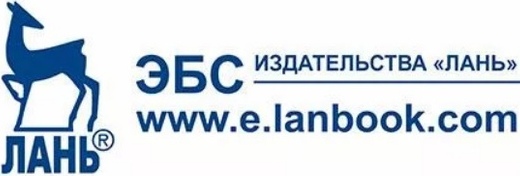GLOCALIZATION OF MODERN ENTERTAINING TV FORMATS IN RUSSIA (BY AN EXAMPLE OF “NOTHING BUT THE TRUTH” ORIGINAL FORMAT)
Abstract
The sociological phenomenon of glocalization is directly related to globalization interpreting global products or services through local ones. Nowadays there is a modern tendency to make glocal media products instead of buying foreign television content. As a typical example we take the original British TV format “Nothing but the Truth” that has been already adapted in more than 45 countries all over the world. Here we have analyzed the Russian project “Detector Lzhy” according to the following criteria: thematic favours and restrictions, format heroes (players) and characters, structure and dramatic composition of the show, visual and audio maintenance. The research result can be incorporated into academic subjects of TV journalism. It can be also effective among experts and practitioners of social and cultural activities. Key findings: a glocalized version implementation on the basis of the original project is a complicated process which demands, firstly, a deeper insight into the rules of the original format. Secondly, the detailed investigation of local tastes and preferences of the target audience. Thirdly, search for the unique modifications which will encourage a successful realization of the adjusted format.Every day, when everyone turns on TV, most of us become unwilling viewers of new programmes appearing on it. Over the past few years, more TV formats were bought, than a decade ago. This fact can be explained by many factors; firstly, it happened because Russian TV consumers didn’t want to watch original foreign programmes. Secondly, TV production in Russia lets us create our own TV projects which help to hold the target audience. Adjusting foreign formats, TV men from many countries achieve different results in getting people interested in these adapted TV programmes.
Each year, the growth and new trends of modern television content exert a vivid influence over already known TV classifications. Nowadays, not only informational, analytical (opinion), and publicistic genre groups are presented, but there is also the forth group – entertaining. That is why it becomes possible to describe new TV products that haven’t been studied before because of their novelty. The main difference between format and genre is in their changeability. “Formats as well as genres contain <…> the system of values. But these values as well as formats are unstable and changeable according to new circumstances” [7, p. 55]. Researchers call this phenomenon as hybridity – a constant tendency of TV format to be refreshed. TV producers must never stop working at the mechanisms of TV format adaptation and its improvement, only then it can be possible to save top ratings of adjusted programmes.
Changeability on a local level is the basis of such sociological phenomenon as glocalization which often can be found in the studies connected with the culture of consumption. It is well-known that the sociologist Roland Robertson popularized the term of glocalization. The Italian researcher Giampierto Gobo in his work “Glocalizing methodology? The encounter between local methodologies” says that Robertson “states that glocalization describes the tempering effects of local conditions on global pressures <…> and means the simultaneity – the co-presence – of both universalizing and particularizing tendencies” [3, p. 428]. Therefore, the phenomenon of glocalization is a part of globalization and it “resists the globalisation project by interpreting the global through the local [9, p. 1368]. Jonathan Matusitz and Laura Lord say that “glocalization is a combination of ‘local’ and ‘globalization’ <…> places value on the local by selling products and services adjusted to local tastes and preferences” [5, p. 82-83]. It means that it is also determined as “a balanced paradigm” [4, p. 132] between global and local. Characterizing the phenomenon of glocalization the American sociologist George Ritzer in his work “Globalization of Nothing” quotes a well-known Harvard anthropologist James Watson who focuses on the process of McDonaldization. In his works the researcher doesn’t use the term ‘glocalization’ which is more popular among sociologists, however, he precisely depicts all the constituents of glocalization. So, J. Watson goes on to say that “our aim is to determine how McDonald’s worldwide system has been adapted to local circumstances” in East Asia [8, p. 149-150].
It is important to mention that the phenomenon of glocalization is applicable to the technology of “the adaptations of global television formats in different countries reveals that these formats are used as carriers which are filled with specific cultural content by each national television” [9, p. 1368]. “In the age of globalisation, media as cultural or commercial products move globally, but are constantly domesticated in ways that create links of meaning between the media and the history, culture, politics, society, etc. of local viewers <…> how journalists tried to transform the event by adapting it to the relevant structure of a local audience, and converting foreign agendas into home agendas [10, p. 77].
People who make modern TV content spread it all over the world where it is adapted to local conditions and consumers’ needs in order to get a maximum impact on TV audience. Obviously, “another cause for glocalisation in the media industry is the market economy, to which global media need to customize their product in order to attract local people or audiences” [2, p. 324] Television producers choose the key format characteristics, and by varying them successfully, they achieve top TV ratings; if not, they just fail on local markets of different countries. On television, the phenomenon of glocalization is expressed by adjusting different original TV formats in many countries. This process of adapting is very popular and wide-spread nowadays. Therefore, there are two types of formats: original and adapted. The original format is defined as “the bible of production”. It is a full description of the format (scenography, music, images of participants, and etc.) made by its franchiser. The adapted format is defined as a revised original format [6].
A well-known format “Nothing but the Truth” is very popular all over the world. It is a game show created by Howard Schultz, an American television producer. Firstly, it was broadcast in Colombia. The host asks the players a series of 21 increasingly personal and embarrassing questions for a huge jackpot. The format has been exported to many countries. In Great Britain, “Nothing but the Truth” was a game show hosted by Jerry Springer. In Russia, this TV show appeared as “Detector Lzhy” (“Lie Detector”) and it was firstly broadcast in July 2010. Andrey Malakhov, a well-known Russian showman, hosted this TV project. We made our analysis of this TV format adjusting according to the following criteria: thematic favours and restrictions, format heroes (players) and characters, structure and dramatic composition of the show, visual and audio support.
Thematic favours and restrictions. We have analyzed 24 programmes of this TV show and concluded that, first of all, players are mainly asked about their private life (matrimonial and family relations, problems connected with the generation gap etc.). There are also questions which deal with professional interests. We have noticed that there are no questions about religion at all. On the whole, the content of the adapted programmes mainly corresponds to the demands of the original format. But we cannot mention that straightforwardness of intimate questions in the Russian version of this TV format is not as direct as the questions in the original format. This restriction can be regarded as a corrective action toward the original format. We think, to some extent it may be explained by our country's multi-cultural, multi-religious nature and also by “the moral taboo” inherited from the Soviet Union which perhaps can still have an influence on Russian mentality.
Format heroes (players) and characters. We have revealed three dominant purposes of heros’ coming to this show. Thus, all players can be motivated by the following reasons:
– the opportunity to earn money. It means that a player wants to get money in return for being sincere;
– the opportunity to prove his/her friends and relatives that he/she can and wants to say the truth;
– the opportunity to realize his/her potential. It means that a participant wants to try himself/herself in the role of the main hero just because of self-interest.
For these reasons we have distinguished the main archetypes in the heros’ images:
– a person who is accused of a crime and is ready to answer discreditable questions because he/she is sure that he/she is not guilty;
– a person who is ready to reveal everything that he/she has never said before just because of getting money;
– a young man or a woman who has the protracted conflict with the members his or her family even probably from the childhood.
Each player has his/her support group consisting of the members of the family, friends, colleagues etc. At the beginning of a show, the anchorman has a talk with anybody from the player’s support group. And this talk can be regarded as a tool of tensing dramatic composition because both the player and viewers can see the emotions of any member from the support group.
The structure and dramatic composition of the show. As we have already noted, the form of a TV programme is defined by its content. On the whole, the structure of “Detector Lzhy” reflects the structure of the original format: the anchorman’s greeting, reminding the project rules for viewers, player and support group presentation, reminding the project rules in detail especially for the player, and a question-answer stage. In the Russian adapted show, there is also one vivid peculiarity. From the 22nd programme of the show the producers add two participants (professional physiologists – Anetta Orlova and Eva Veselnitsakaya) whose aim is to comment on the player’s answers only for viewers. It means that a player and his support group cannot hear what they are saying at the moment.
As far as dramatic composition of the show is concerned, we think that it is made by tensing the meaning of questions gradually. The longer the show goes on, the more revealing and tenser questions the anchorman asks. The producers also use some other ways to support the viewers’ interest toward the show. First of all, the show is usually interrupted with a commercial before the polygraph lie detector announces “true” or “false”. Generally, the closer the player is to get his/her absolute winnings, the longer “artificial” (made on purpose) pauses appear between his answer and the polygraph final announcement.
If the hero of the show decides to stop playing, the anchorman always tries to comment on his/her participation in the project. However, his/her comments are monotonous and unemotional in comparison with the original format where the anchorman Gerald Springer is not always serious and expresses different emotions.
Visual and audio support. In Russian version of TV project “Nothing but the Truth”, the visual support differs from the colours of the original format. Obviously, a cold blue colour prevails in the adapted format instead of purple which is presented in the original show. It is not easy to interpret why Russian producers chose this colour for the project, but if we turn to the colour test of the famous Swiss physiologist Max Luescher [1], we will see that a deep blue colour denotes appeasement and calmness. If a player says the truth the TV studio is lighted up with a green colour but if he lies we see a red colour on the screen. According to Luescher’s RGB (red-green-blue) model, green denotes tension connected with confidence. Red is determined by the scientist as the colour of conflict. Thus, there is a combination of red, green, and blue colours that probably is “a special game” with people’s subconscious. Thus, it is obvious that the spectrum of colours in the adjusted format is quite different from the original show. As far as the audio support is concerned, we see that all demands of the original format are carried out. It expresses emotions such as anxiety and nervousness. Mostly it is intriguing and mysterious.
In the conclusion it should be noted that the Russian producers mostly use the structure and thematic areas from the original format. However, in Russia, this TV show is called a physiological project and we can say that this project name is supported by the choice of colour for the TV studio, the image of an anchorman (always calm and imperturbable), and the comments of professional psychologists. So, all these modifications made by local TV people are used to create the originality of the project – its glocalized version.

















Reference lists